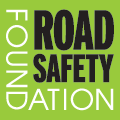EuroRAP’s Role
At the most basic level, road-users, road authorities, road planners and engineers all stand to benefit from the work being undertaken through EuroRAP:
- Road users: As EuroRAP’s results are promoted, road-users will come to understand their road safety risk and how it changes as they move onto different standards and types of roads. Risk aware road users will be more likely to adapt their driving behaviour to reduce their risk of a crash. Informed road-users will also be better able to understand and respect the reasons for traffic laws and speed limits. They will want to see action to make roads safer.
- Road authorities, planners and engineers: Those responsible for roads will know from EuroRAP how well their roads are performing overall compared with those in other regions and countries. EuroRAP helps track how standards are rising and how quickly best practice is being implemented, identifying priorities for action and investment on existing roads and new routes. EuroRAP methods are an additional tool to existing approaches rather than a replacement.
At a much wider level, EuroRAP results have a far-reaching role and impact:
EUROPEAN LEVEL
- Performance tracking road safety targets
- Making international comparisons of national networks
- Communicating road safety messages
- Comparing visually and quantitatively network performance across Europe
- Generating higher awareness among policy-makers, professionals and the public about road safety issues
- Sharing awareness of good practice
NATIONAL LEVEL
- Increasing awareness of road risk patterns among policy-makers and road providers
- Making comparisons within and between countries
- Raising the profile of road safety compared with other issues
- Promoting the combined and separate responsibilities of road-users, road operators, road planners and vehicle manufacturers
REGIONAL/LOCAL LEVEL
- Monitoring by local authority/regional government engineers
- Analysing safety records of routes across traditional boundaries
- Analysing by tracking performance change through time
- Assessing the success of remedial measures
- Localising road safety as an issue
- Generating interest in road safety and the reasons underlying higher risk road sections
PRIVATE SECTOR
- Engaging with equipment providers and crash protection specialists
- Mobilising motoring organisations in engaging the public
- Providing information for professional drivers and the haulage industry
INDIVIDUAL LEVEL
- Raising the profile and priority of road safety
- Giving road safety meaning at an immediate and local level
- Demonstrating the need for road investment
- Demonstrating personal responsibility for road safety
